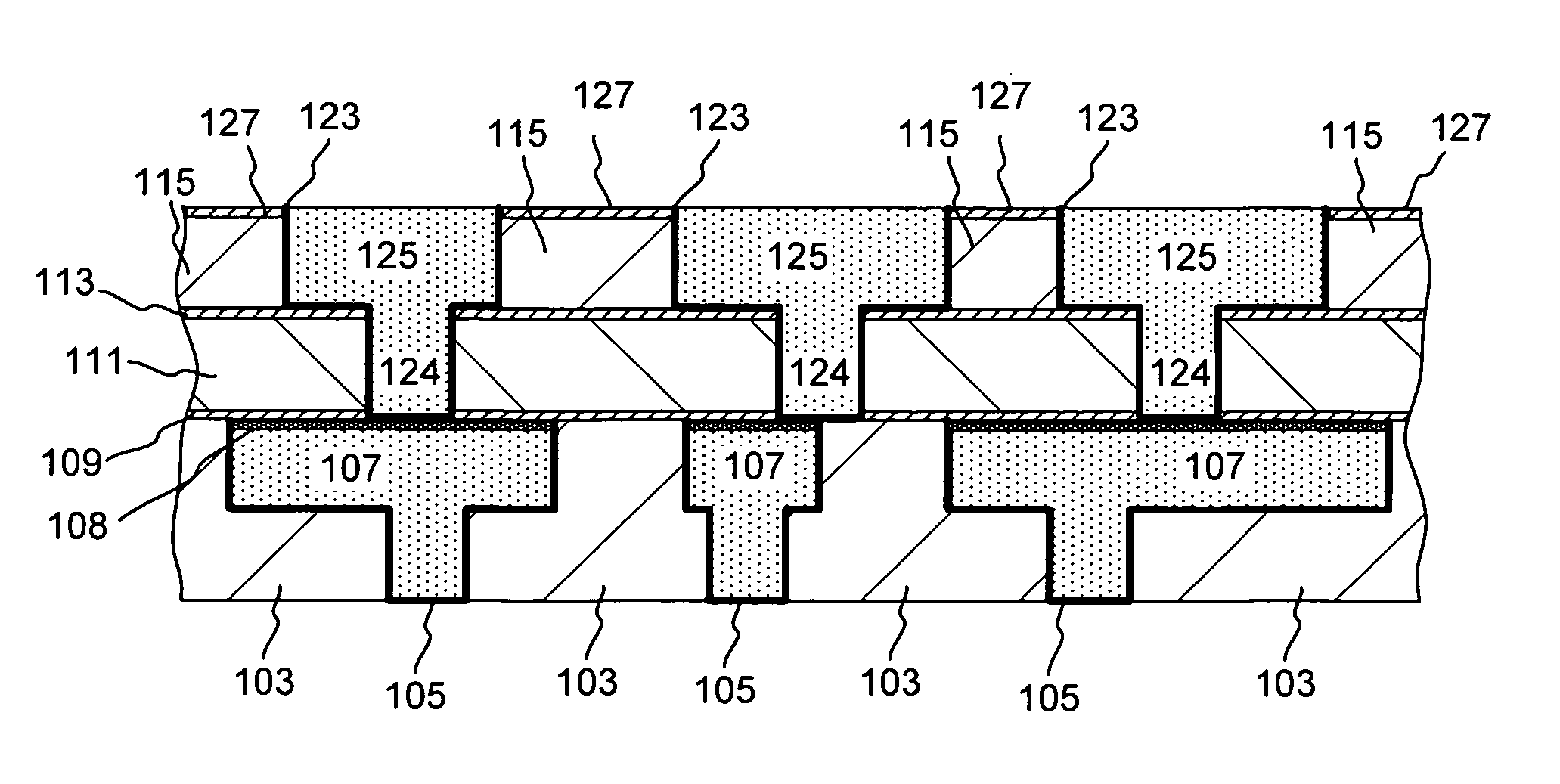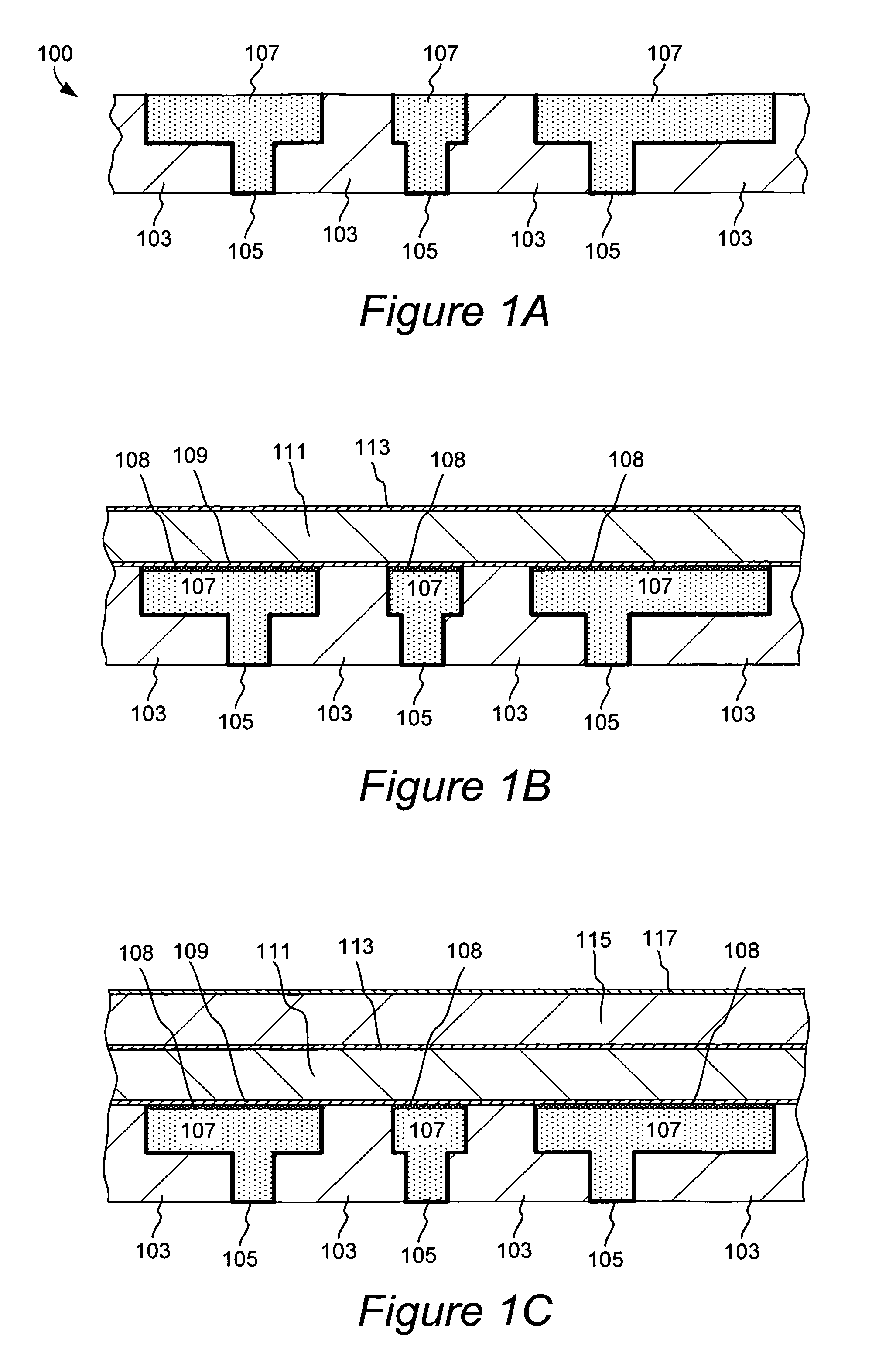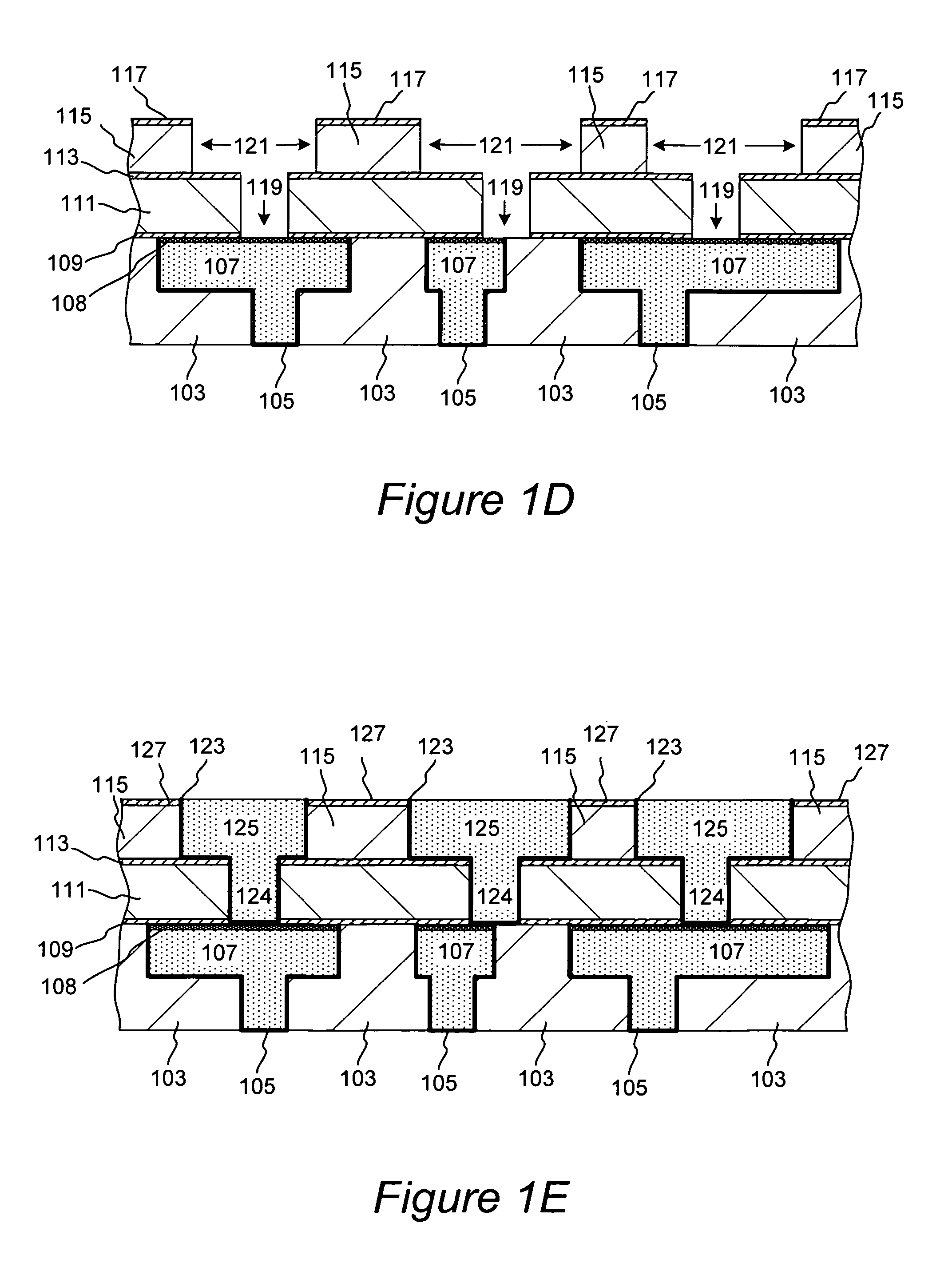Interfacial layers for electromigration resistance improvement in damascene interconnects
a damascene interconnect and interfacial layer technology, applied in the direction of chemical vapor deposition coating, semiconductor/solid-state device details, coatings, etc., can solve the problems of void formation within the interconnect, failure of the device, and failure of the electromigration resistance, so as to improve the electromigration resistance and the effect of greater adhesion
- Summary
- Abstract
- Description
- Claims
- Application Information
AI Technical Summary
Benefits of technology
Problems solved by technology
Method used
Image
Examples
experimental example
[0107]Fabrication of a copper interconnect having a boron-doped protective cap and a passivated layer containing boron and nitrogen will be illustrated with a reference to an experimental example.
[0108]In the described example, the process is started by a plasma pre-clean operation. The partially fabricated semiconductor device having an exposed pattern of copper lines in an ultra low-k dielectric (k=2.5; 5,000 Å thick) was obtained after a CMP operation, and was placed into a process chamber of a PECVD VECTOR™ apparatus. The entire capping process was performed at one station of a four-station apparatus. First, the substrate was pre-heated to 350° C., and H2 was introduced into the process chamber at a flow rate of 4,000 sccm. H2 was flown from second 0 to second 30 of the process time at a pressure of 4 Torr. At second 30 of the process time, HF RF plasma was ignited and was sustained at a power of 1.23 W / cm2 until second 45 of the process time. After the substrate was pre-cleaned...
PUM
| Property | Measurement | Unit |
|---|---|---|
| temperature | aaaaa | aaaaa |
| pressure | aaaaa | aaaaa |
| temperature | aaaaa | aaaaa |
Abstract
Description
Claims
Application Information
 Login to View More
Login to View More - R&D
- Intellectual Property
- Life Sciences
- Materials
- Tech Scout
- Unparalleled Data Quality
- Higher Quality Content
- 60% Fewer Hallucinations
Browse by: Latest US Patents, China's latest patents, Technical Efficacy Thesaurus, Application Domain, Technology Topic, Popular Technical Reports.
© 2025 PatSnap. All rights reserved.Legal|Privacy policy|Modern Slavery Act Transparency Statement|Sitemap|About US| Contact US: help@patsnap.com



